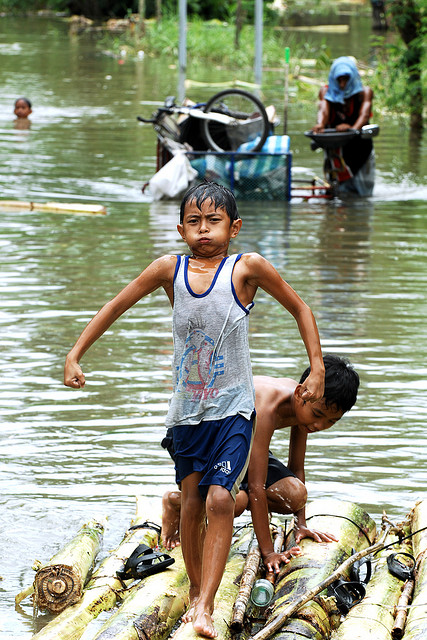"There is global consensus that we are at the beginning of a La Niña, but we cannot pronounce the intensity of the event yet - we have to wait for it to evolve," said Rupa Kumar Kolli, Chief of the World Climate Applications and Services Division at the World Meteorological Organization (WMO).
La Niña is characterised by unusually cold ocean temperatures in the eastern equatorial Pacific Ocean; El Niño is characterised by high temperatures, the US government's National Aeronautics and Space Administration says on its website.
The colder-than-normal ocean temperatures prevent rain-producing clouds from forming over the eastern equatorial Pacific region, including the open ocean south of Mexico and Central America, but enhance rainfall over the western equatorial Pacific region of Indonesia, Malaysia and northern Australia.
This in turn affects the jet streams, or strong wind-flows, in the upper levels of the atmosphere and the behaviour of storms outside of the tropics in both the northern and southern hemispheres. In short, La Niña is a global phenomenon.
The National Hurricane Centre at the US government's National Oceanic and Atmospheric Administration (NOAA) has been expecting a La Niña to occur, and by May 2010 predicted a 70 percent chance that there would be 14 to 23 named storms, with wind speeds of more than 62km per hour. This is far more than the average of 11 named storms during the hurricane season in the Atlantic region, which began in June.
The first hurricane of the season, Alex, hit Mexico on 30 June. NOAA said it was the first hurricane to be recorded in June in the Atlantic Basin since 1995, and the strongest in that month since 1966.
| Gearing Haiti | |
| To help disaster officials and aid workers in Haiti, the International Research Institute for Climate and Society based at the Earth Institute of the Columbia University has developed an online "one-stop shop" for climate information. The online resource provides the best available hurricane, landslides, weather and climate information, says Molly Hellmuth of IRI. The website was set up after the UN Office for the Coordination of Humanitarian Affairs (UN OCHA) approached IRI to help them prepare for the rainy season after the earthquake hit the island in January. IRI's partners in the project are the Red Cross/Red Crescent Climate Centre, Caribbean Institute for Meteorology and Hydrology, Center for International Earth Science Information Network, the Caribbean Catastrophe Risk Insurance Facility and the Caribbean Risk Managers Ltd. The website is available at: http://iri.columbia.edu/haiti/ |
|
Africa
Cobus Olivier, a scientist in the Prediction Research section of the South African Weather Service, said the possible impact of La Niña on Africa, and particularly southern Africa, was unclear. "At the moment the La Nina event is only starting out and will most probably take a month or two before it's considered a true La Niña event."
He said it was very difficult to predict the impact as this could vary within the African region and from one La Niña event to another. La Niña is usually associated with more rain, but an analysis of rainfall patterns for African countries south of the equator tells a different story.
Olivier and his colleagues used rainfall data collected during La Niña events from 1961 to 2002, for the months of August, September and October, when the event is expected to be more pronounced.
"Uganda and the southern parts of Sudan usually seem to have wetter conditions during La Niña ... but parts of Angola, DRC [Democratic Republic of Congo], Mozambique, Tanzania, Kenya, Somalia and Madagascar tend towards drier conditions," he said.
In South Africa the situation is "very variable", but "Generally it looks like we may have favourable spring rains [in September-October], and this is also supported by our latest forecast."
Southeast Asia
Meteorologists in Southeast Asia, where the monsoon season is underway, have predicted a normal monsoon, Kolli said. The region struggled with poor rains caused by an El Niño that affected food production in India, Pakistan, Bangladesh, Nepal, Vietnam, the Philippines and Thailand.
"But if the La Niña gets more pronounced, there is a stronger chance of monsoon depressions turning into cyclones that would affect Bangladesh and its surrounding areas [India and Myanmar], with heavier monsoons leading to flooding and mudslides."
July is the time of year when cyclonic storms, known as typhoons in the northwest Pacific, start rolling in, but Kolli said there was not a "very strong association between the La Niña event and typhoons."
jk/he
This article was produced by IRIN News while it was part of the United Nations Office for the Coordination of Humanitarian Affairs. Please send queries on copyright or liability to the UN. For more information: https://shop.un.org/rights-permissions




